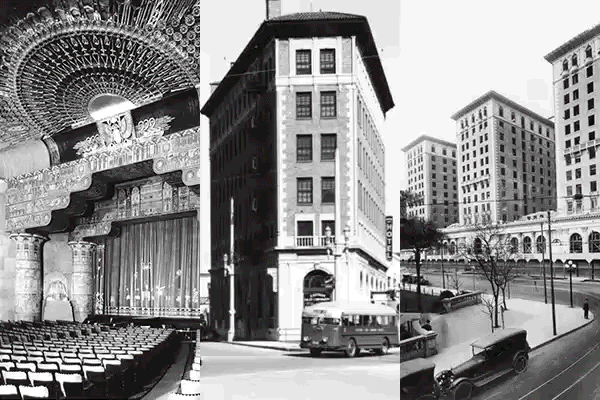Pasadena Showcase House Has Plenty of Roamin’ Room
- Share via
You have a grand salon, with a massive stone fireplace, overlooking the San Gabriel Valley; you have a large living room, with a massive stone fireplace, overlooking the swimming pool and gardens; you have a family room big enough for basketball, with a massive stone fireplace and a view of the San Gabriel Mountains.
Where do you spend your time? Probably in the sitting room among the shelves of books and works of art, including a garden scene that looks like the work of Impressionist painter Claude Monet. (The Monet is a fake, but it’s by a famous fraud who did prison time and now works for museums.)
If you want to escape your guests you might retreat to the master bedroom with its window looking down on a waterfall and stream enclosed by massive boulders and inhabited by exotic koi. The boulders, by the way, like the Monet, are fake. I don’t know who made them but it wasn’t God.
There are also the music villa, the library, the sitting room, the galleria, numerous terraces and gardens and, finally, a last resort, the basement wine cellar, with 1,000 bottles in racks and a small table and two chairs for sipping.
This is the 1991 Pasadena Showcase House of Design. It stands on six wooded acres in the foothills of Pasadena above the site of the world-famous Sierra Madre Villa Hotel, which in the 1880s was visited by such celebrities as Helen Hunt Jackson, author of “Ramona”; Abbott Kinney, visionary founder of Venice; Ulysses S. Grant and Leland Stanford, Collis P. Huntington, Charles Crocker and Mark Hopkins, the Big Four of California finance.
The 11,500-square-foot Showcase was built by architect John Galbraith between 1972 and 1976. Galbraith is one of the few Showcase architects who is still alive and working. His “modern” house is flat-roofed, an arrangement of oblong spaces designed to exploit the magnificent setting.
By the time they are opened to the public April 21, the house and gardens will have been redone by 46 interior designers and landscapers. That harmony can be achieved by such individualistic artists is an annual miracle and a testament to the genius of the Pasadena Junior Philharmonic Committee, which somehow always brings this improbable event out of chaos.
As I remember, this is the first truly modern house selected by the Junior Phils. Somehow its straight roof line seems compatible with the great blue upsurge of the mountains close behind it, and with the oak, pine and eucalyptus that abound on the grounds.
Here and there the designers have been playful. In the washroom a trompe l’oeil wash hangs on the wall--socks, a pair of polka-dot drawers, handkerchiefs. A giraffe is nibbling at a sock. Two five-foot bronze cranes stand rather intrusively in the master bathroom.
If you’re bored with the grand salon, the living room, the family room and the master bedroom, you can hang out in the kitchen. Its granite countertops and large central island are big enough for two cooks at a time. If this isn’t enough, there’s another kitchen off the family room.
Gardens abound. In the Orchid Aerie a gazebo stands above a canyon of sycamores. From the Oak Tree Garden, surrounded by ferns, palms, orchids, oaks and sculpture, one can see the San Gabriel Valley. An English bird garden features English perennials and annuals and a birdhouse in the shape of the Showcase house.
Showcase historian Kathy Martin reveals that the Sierra Madre Villa was started by William Porter Rhoades in 1874, when he and his family joined his father, a New York artist named William Cogswell, on 500 acres purchased by Cogswell in what was known as Pasadena Glen.
Rhoades built a large private house but was soon entertaining so many guests that he added a 20-room hotel. Each room had gas lights and a fireplace. Guests rode and hiked in the foothills and hunted deer, bear and rabbit. In 1886 Rhoades added 30 morerooms, and sometimes he served 400 guests at lunch. But running a hotel didn’t satisfy his sense of hospitality. He sold the villa. After a few years it became a sanitarium, then stood vacant, then, in 1920, it burned.
In 1928 an Italian villa was built on the Showcase land by a dentist. When Galbraith built the new house in 1972, he incorporated 1,080 square feet of the original house.
In its 26 years of Showcase events, the committee has raised nearly $4 million for the Los Angeles Philharmonic Assn. It also assists several community youth music groups. In recent years annual donations have topped $400,000.
The house will be open April 21 through May 19, Wednesday through Friday, 9:30 a.m. to 8 p.m., Saturday and Sunday, 9:30 a.m. to 4 p.m. For information on tickets and free parking and shuttle service, call (818) 792-4661.
More to Read
Sign up for The Wild
We’ll help you find the best places to hike, bike and run, as well as the perfect silent spots for meditation and yoga.
You may occasionally receive promotional content from the Los Angeles Times.






